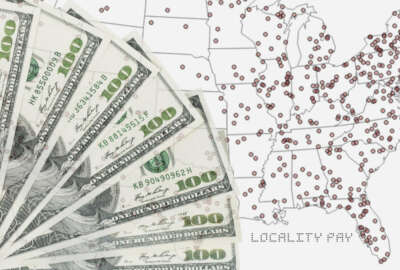
As locality pay list grows longer, feds may see ‘relatively lower pay increases,’ OPM says
The Trump administration will add Des Moines, Iowa, to its list of locality pay areas, bringing the total to 54. Adding a locality pay area will directly impact...
A few thousand federal employees are a step closer to their own separate locality pay area.
The Office of Personnel Management will issue new regulations Thursday, which formally establish Des Moines, Iowa, as a new locality pay area. OPM will also expand an existing area and add Imperial County, California, to the Los Angeles/Long Beach locality pay zone.
OPM will issue the final rule on behalf of the president’s pay agent, a group that consists of the OPM director, the Office of Management and Budget director and the Labor secretary.
The addition of Des Moines and the expansion of the Los Angeles locality pay area will impact about 3,100 and 1,860 General Schedule employees, respectively, according to OPM.
But adding new locality pay areas does have an impact — if not a more circuitous one — on the rest of the federal workforce.
“When locality pay percentages are adjusted, past practice has been to allocate a percent of the total GS payroll for locality pay raises and to have the overall dollar cost for such pay raises be the same, regardless of the number of locality pay areas,” OPM said. “If a percent of the total GS payroll is allocated for locality pay increases, the addition of a new locality pay area results in a somewhat smaller amount to allocate for locality pay increases in existing areas. Implementing higher locality pay rates in the new Des Moines locality pay area could thus result in relatively lower pay increases for employees in existing locality pay areas than they would otherwise receive.”
In other words, the more distinct locality pay areas there are, the smaller the locality pay adjustments are for federal employees in those areas. Federal employees in the six locality pay areas that were added back in 2019 noticed this phenomenon and said they were disappointed the payout wasn’t higher.
The addition of Des Moines, would bring the total number of locality pay areas to 54, including “rest of U.S.,” a term used to describe the federal employees who don’t work within any of the other 53 distinct areas.
Thursday’s final rule nearly completes a process the Federal Salary Council started last summer, when it agreed to establish Des Moines as its own locality pay area. The president’s pay agent signed off on the move last December.
OPM’s latest regulations, in theory, go into effect on the first pay period after Jan. 1, 2021. President Donald Trump, however, must physically set locality pay rates via an executive order, which usually arrives near the end of the year.
Trump’s federal pay plans for 2021 may also complicate matters. The president proposed a 1% across-the-board pay raise for federal employees next year. To date, he hasn’t proposed any locality pay adjustments, and Congress hasn’t suggested it will step in and pass its own raise for federal workers, meaning employees in Iowa and California may not see a change in 2021.
OPM received 28 comments to the proposed rule it issued back in July on these locality pay changes. A few of the commenters said agencies in their regions were experiencing recruitment and retention challenges and expressed concern and frustration that their areas were still part of the “rest of U.S.”
“The pay agent has no evidence that the changes these final regulations will make in locality pay area definitions will create recruitment and retention challenges for federal employers,” OPM said. “However, should recruitment and retention challenges exist in a location, federal agencies have considerable administrative authority to address those challenges through the use of current pay flexibilities.”
Still, OPM and the president’s pay agent has acknowledged the methodology and the statistical tests regions must meet to qualify for their own locality pay areas haven’t made much sense, and absent congressional action, the current system often fails to address recruitment and retention challenges.
Copyright © 2024 Federal News Network. All rights reserved. This website is not intended for users located within the European Economic Area.
Nicole Ogrysko is a reporter for Federal News Network focusing on the federal workforce and federal pay and benefits.
Follow @nogryskoWFED




